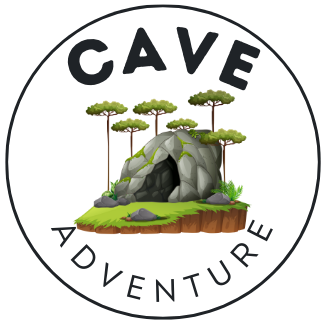Introduction
Mammoth Cave National Park, located in Kentucky, is home to the world’s longest known cave system. This natural wonder attracts visitors from around the globe, eager to explore its vast underground network and learn about its unique ecosystem. Visitor education plays a crucial role in enhancing the experience of those who come to Mammoth Cave, providing valuable insights into the cave’s geology, history, and ecological significance. This comprehensive guide will delve into the various aspects of Mammoth Cave visitor education, offering a wealth of information for both first-time visitors and seasoned cave enthusiasts.
The Importance of Visitor Education at Mammoth Cave
Visitor education at Mammoth Cave serves multiple purposes:
- Safety: Educating visitors about cave safety protocols and potential hazards ensures a secure experience for all.
- Conservation: By raising awareness about the cave’s fragile ecosystem, visitors are more likely to practice responsible tourism.
- Appreciation: Understanding the cave’s formation, history, and significance enhances visitors’ appreciation for this natural wonder.
- Scientific Understanding: Education programs provide insights into ongoing research and discoveries within the cave system.
Visitor Center: The Hub of Education
The Mammoth Cave Visitor Center serves as the primary starting point for most educational experiences. Here, visitors can:
- View exhibits on cave formation, wildlife, and human history
- Watch informative films about the cave system
- Speak with knowledgeable park rangers
- Pick up educational materials and guidebooks
- Sign up for guided tours
Guided Tours: Immersive Learning Experiences
Mammoth Cave offers a variety of guided tours, each providing unique educational opportunities:
- Historic Tour: Focuses on the cave’s human history and early exploration.
- Domes and Dripstones Tour: Highlights the cave’s geological features and formation processes.
- Frozen Niagara Tour: Showcases stunning cave formations in an easily accessible area.
- Wild Cave Tour: Offers a more adventurous experience while teaching about cave conservation.
During these tours, park rangers share in-depth information about the cave’s geology, ecology, and cultural significance.
Junior Ranger Program: Educating Young Explorers
The Junior Ranger Program at Mammoth Cave is designed to engage young visitors in educational activities. Participants can:
- Complete activity booklets tailored to different age groups
- Attend special ranger-led programs
- Earn a Junior Ranger badge upon completion
This program instills a sense of stewardship and appreciation for nature in children, fostering the next generation of cave enthusiasts and conservationists.
Environmental Education: Connecting Cave and Surface Ecosystems
Mammoth Cave National Park offers environmental education programs that highlight the interconnectedness of cave and surface ecosystems. These programs often include:
- Guided nature walks above ground
- Workshops on local flora and fauna
- Discussions on the impact of surface activities on cave environments
One notable event that showcases this connection is the annual Earth Day celebration at Mammoth Cave. This event features special programs, activities, and presentations that emphasize the importance of environmental conservation both above and below ground.
Research and Citizen Science Opportunities
Mammoth Cave serves as a living laboratory for scientific research. Visitor education programs often incorporate information about ongoing studies and discoveries. Some opportunities for visitors to engage in citizen science include:
- Participating in bat population surveys
- Assisting with water quality monitoring
- Contributing to biodiversity inventories
These programs not only educate visitors but also allow them to actively contribute to the scientific understanding of the cave system.
Technology in Cave Education
Modern technology has enhanced visitor education at Mammoth Cave:
- Virtual Tours: Allow visitors to explore parts of the cave system remotely.
- Interactive Exhibits: Use touchscreens and augmented reality to explain complex geological processes.
- Mobile Apps: Provide self-guided tour information and educational content.
- Social Media: Shares real-time updates, fun facts, and educational tidbits about the cave.
Accessibility and Inclusive Education
Mammoth Cave National Park strives to make its educational programs accessible to all visitors:
- Accessible Tours: Offer modified cave experiences for visitors with mobility challenges.
- Sign Language Interpretation: Available for select tours and programs.
- Braille Materials: Provide information for visually impaired visitors.
- Multilingual Resources: Offer tour information and educational materials in various languages.
Seasonal Educational Programs
Throughout the year, Mammoth Cave offers special educational programs that align with seasonal themes:
- Spring: Focus on cave flora and fauna, including the return of bats from hibernation.
- Summer: Highlight the cultural history of the cave, including Indigenous peoples’ use of the cave.
- Fall: Explore the connection between surface fall colors and underground ecosystems.
- Winter: Discuss cave geology and the formation of ice structures near cave entrances.
Conservation Education: Protecting Mammoth Cave for Future Generations
A significant aspect of visitor education at Mammoth Cave revolves around conservation. Programs and exhibits emphasize:
- The importance of not touching cave formations
- Proper disposal of waste and the impact of litter on cave ecosystems
- The role of water conservation in protecting underground waterways
- How climate change affects cave environments
Visitors are encouraged to become stewards of the cave, taking the lessons learned at Mammoth Cave and applying them to their local environments.
Conclusion
Visitor education at Mammoth Cave National Park is a multifaceted endeavor that combines traditional guided tours with modern technology, hands-on experiences, and scientific engagement. By offering a diverse range of educational programs, the park ensures that visitors of all ages and backgrounds can gain a deep appreciation for this underground wonder. From the awe-inspiring geological formations to the delicate ecosystems that thrive in darkness, Mammoth Cave provides endless opportunities for learning and discovery.
As you plan your visit to Mammoth Cave, consider participating in various educational programs to enrich your experience. Whether you’re attending the Earth Day celebrations, joining a guided tour, or engaging in a citizen science project, you’ll come away with a newfound understanding of the complex and fascinating world beneath our feet. The knowledge gained through these educational experiences not only enhances your visit but also contributes to the ongoing preservation of Mammoth Cave for future generations to explore and cherish.
